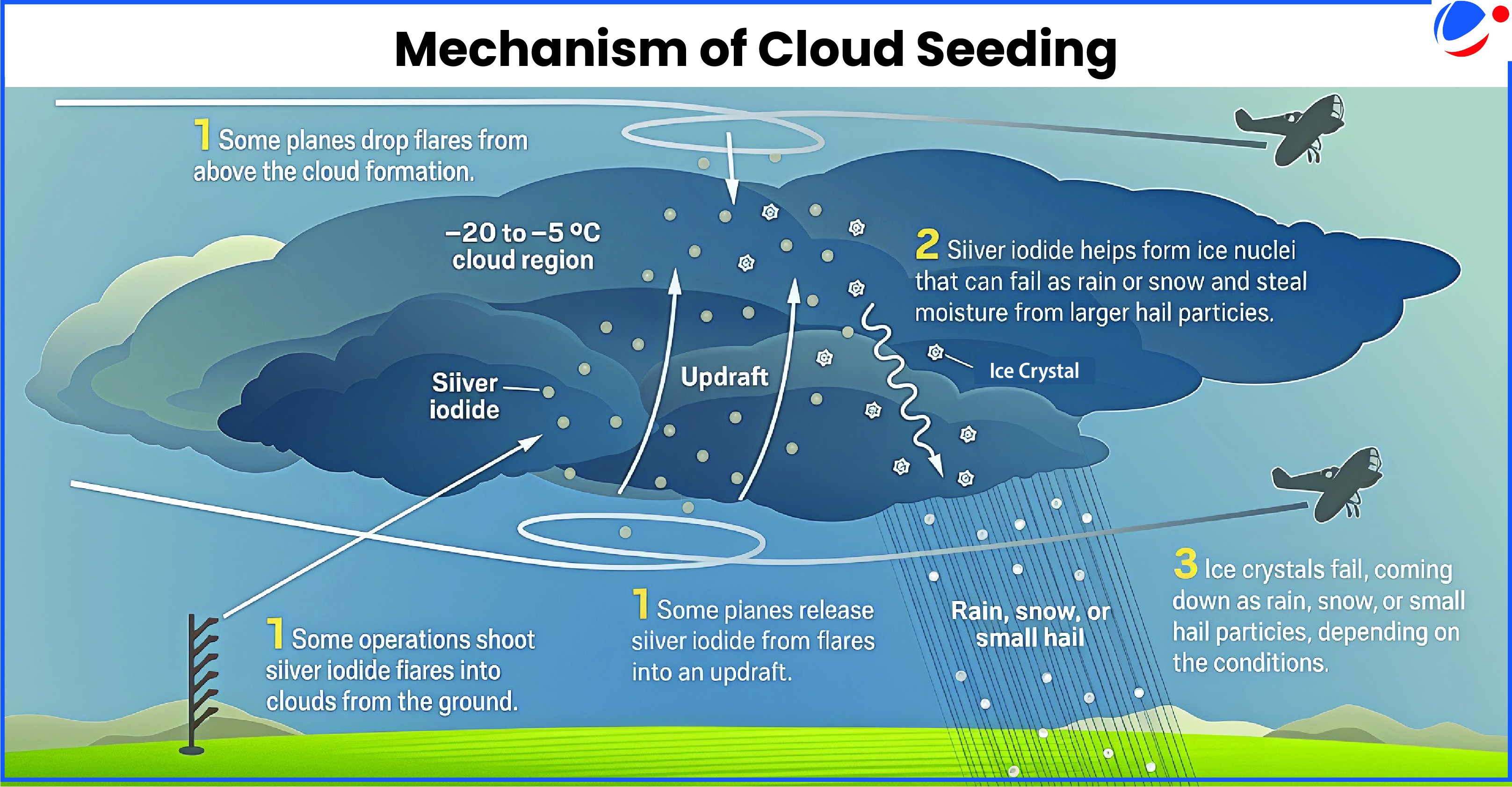Conducted by IIT Kanpur, it could lead to city’s first artificial rain in the coming days if the weather remains favourable.
About Cloud Seeding
- Meaning: It is a weather modification technique that improves a cloud’s ability to produce rain or snow by introducing tiny ice nuclei into certain types of clouds.
- It is conducted on existing natural clouds and does not create clouds.
- Working: Nuclei are released into the cloud by an aircraft and/or by ground-based generators providing a base for snowflakes to form.
- These newly formed snowflakes quickly grow and fall from the clouds back to Earth.
- Seeding Agents: Silver Iodide (AgI), most common material, known for its efficient ice nucleating properties.
- Other chemicals used are potassium iodide (KI), sulfur dioxide (SO2), frozen carbon dioxide – dry ice (CO2), etc.
 |
Benefits of Cloud Seeding
- Combating Pollution: Regarded as the scientific method for providing respite from pollution.
- Enhancing Winter snowfall and mountain Snowpack: It supplements the natural water supply available to communities of surrounding area.
Concerns Associated
- Lack of Reliable Information: Making the operation less effective, also the return on investments remains unclear.
- Issues with Seeding Material: Silver Iodide might be toxic to terrestrial and aquatic life, prompting exploration of less harmful alternatives.
- Environmental Risks: In case cloud seeding coincides with intense rainfall causing floods, damaging infrastructure, crops, and livelihoods, etc.
Conclusion
There is an ethical imperative to conduct an exhaustive research, weighing the potential benefits against the associated health risks involved.





